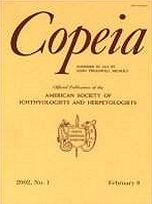The existence of temperature-dependent sex determination (TSD) and its latitudinal variability among populations were examined experimentally in Menidia peninsulae. Along the Florida coast, TSD was detected only in a northern population (Apalachee Bay: 29°55′N), wherein the proportion of females declined dramatically with increasing rearing temperature. In lower-latitude populations (New Smyrna Beach: 29°05′N, Vero Beach: 27°46′N, and Grassy Key: 24°45′N), however, offspring sex ratios were temperature-independent and approximated 1:1 at all temperatures examined (17–32 C), indicating genetic sex determination (GSD). The shift from TSD to GSD with decreasing latitude in M. peninsulae occurs coincidentally with a shift from annual to semiannual breeding and life cycle patterns. Combined with the previous studies of the northern congener Menidia menidia (∼32–47°N), the level of TSD in the genus Menidia is generally highest at intermediate latitudes (∼32–38°N), whereas nearly pure GSD is displayed at the northern and southern extremes. This pattern of latitudinal variation across two species confirms that TSD is adaptive in Menidia only in annual life histories wherein temperature during larval development serves as an accurate predictor of length of growing season and hence relative adult body size.
BioOne.org will be down briefly for maintenance on 17 December 2024 between 18:00-22:00 Pacific Time US. We apologize for any inconvenience.
How to translate text using browser tools
1 February 2003
Interpopulation Variability in Temperature-Dependent Sex Determination of the Tidewater Silverside Menidia peninsulae (Pisces: Atherinidae)
Kazunori Yamahira,
David O. Conover
ACCESS THE FULL ARTICLE





